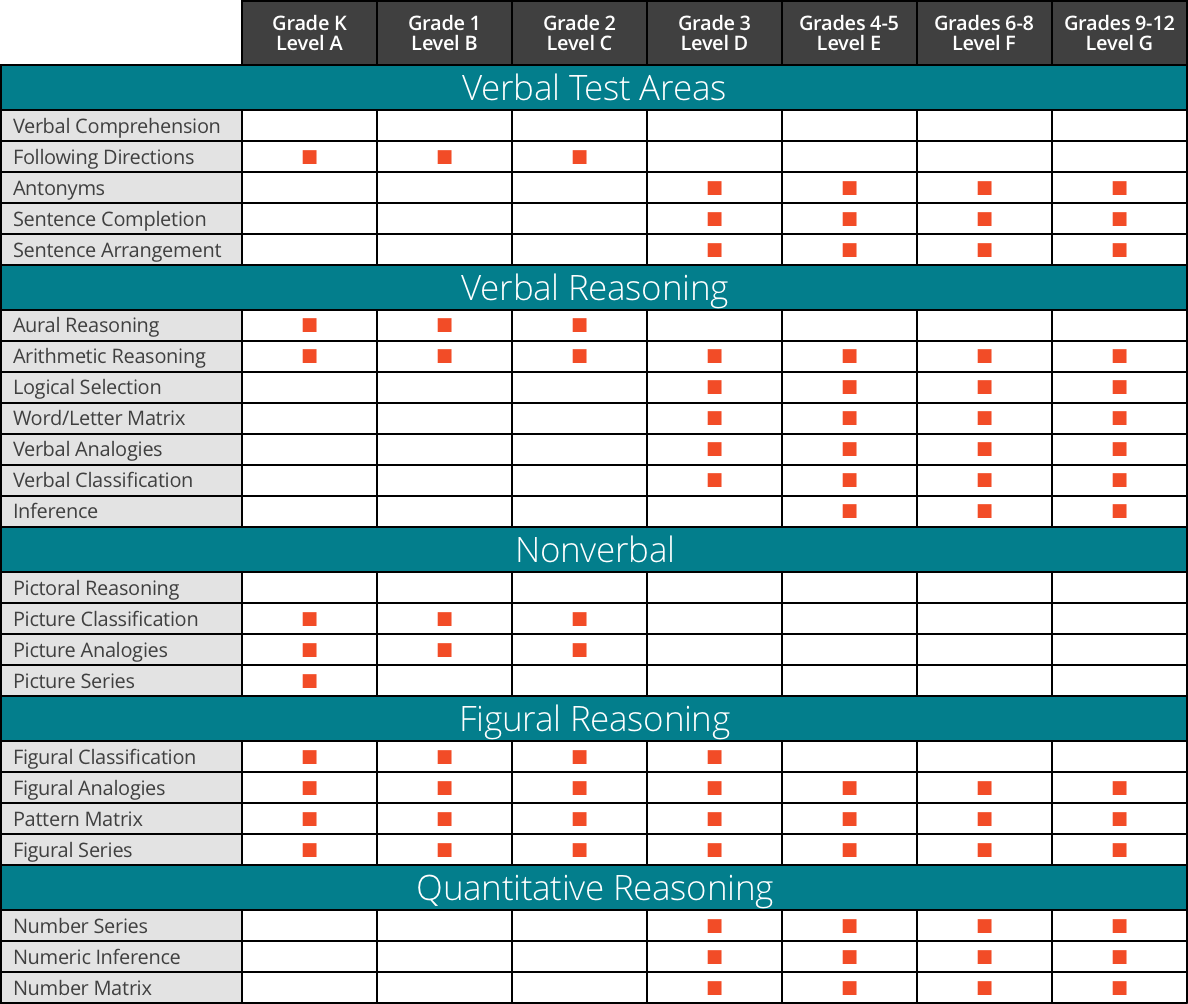The Otis-Lennon School Abilities Test (OLSAT) is a group administered aptitude test commonly given as an entrance exam into school's gifted programs.
To determine your child's aptitude, the OLSAT exam assesses how your child does on things that are new to them. Therefore, the exam has many types of questions that your child would not have seen before. If your child understands the short set of directions that the administrator reads to your child prior to each section, they will probably do OK on the exam, but if they misunderstand the brief description, they can miss entire sections on the exam - due to a misunderstanding, not their intellect.
Given that many schools rely solely on these test scores to place your child in the best programs, it would be highly beneficial to make sure that your child understands what each of the test areas is asking so that you could fix any issues before exam day.
Our full-length practice tests for the OLSAT exam are in the same format as the exam. With our practice tests your child will become familiar with how the tests are formatted, the symbols used and the number of questions in each test area so that you can ensure they know what each test area is asking. However, since these practice tests have not been standardized with Harcourt Education and the actual OLSAT exam, a valid OLSAT test score cannot be concluded from their results on these practice tests.
View our free OLSAT Sample Questions
The Otis-Lennon School Abilities Test (OLSAT) is divided into 7 test levels designed to test students with 10-15 question types in 5 areas of ability. Below is a breakdown of question types by grade level.

The number of questions on the OLSAT exam depends on the grade level. Administration time may vary, depending on how long the proctor takes to administer the test, but usually ranges between 60-75 minutes for the test. The table in the below details the number of questions by level. See the table below for the full details on the different lengths of each test.

GATE, TAG (Talented and Gifted), PRISM, GT or G/T, Academically Gifted Program, Extended Learning Program, and many others...
These programs often have the lowest student-to-teacher ratios, the best teachers, and additional funding that regular classrooms do not receive.
In order to get your child into your school's best programs, your child will likely need to pass one or more of the gifted program entry exams. There are several exams usually given for these programs and these exams can be divided into two types:
Aptitude Tests aim to evaluate your child's intelligence and only those children who receive the highest scores are selected for the best programs. The questions on aptitude tests are not things they have learned in school and are types questions that they have probably never seen before exam day. If they don't understand the types of questions or if the directions are not well explained on exam day, your child will not do well on these exams and will not have access to the best teachers and best programs.
Many parents have been frustrated that their children's scores on these exams do not reflect their intelligence and many kids have missed out on these programs by only a point or two on the exams, year after year. Our practice tests have changed that.
Mercer Publishing is the publisher of the original full-length practice test for the three most common aptitude tests - the Cognitive Abilities Test® (CogAT®) and Naglieri Nonverbal Ability Test® (NNAT®) and Otis-Lennon School Abilities Test®(OLSAT®).
The OLSAT test uses a Total Age-Based Percentile Score to measure a child's performance on the test. This score is calculated by assessing how many questions a student answered correctly and then weights that score against other students of the same age. I child that is 6 months younger than another student will only be assessed against other students his or her age.
Once this calculation has been done, a student's test results will report a percentile ranking of how they did on a scale of 0-100% against all the other students in their age group. Each student will receive Age-based and Grade-based percentile rankings for the entire test as well as sub test rankings in both verbal and non-verbal question types.
Students will usually need to perform in the top 95 percentile to be identified for a schools Talented and Gifted programs.
We recommend a couple of strategies that have helped get students who may be struggling to get to a 95 percentile ranking on their practice tests.
One of the most important aspects of practicing for an abilities test is to go over the questions that a child has missed or guessed on during the practice test. It is very important that a child understand what the question is asking and the logic that is being used to come up with the correct answer. These questions are similar to the actual test and use logic that a child will need to understand before they take the actual test.
Some children can also be challenged by moving up a grade level to practice questions that will be harder than what they may see at their grade level.
If a child has problems in a specific area such as non-verbal questions, we normally recommend our Naglieri Nonverbal Ability Test (NNAT3) practice tests which are practice tests with similar questions to the nonverbal sections of the OLSAT.
For students needing more help on the verbal sections of the test we recommend our Cognitive Abilities Test (CogAT) practice exam which each have 60 additional verbal questions to practice. The CogAT also contains both nonverbal and quantitative sections that are helpful in preparation for the OLSAT exam.
If additional help is needed, please don't hesitate to contact us to see if their are some additional resources we can recommend for your specific situation.